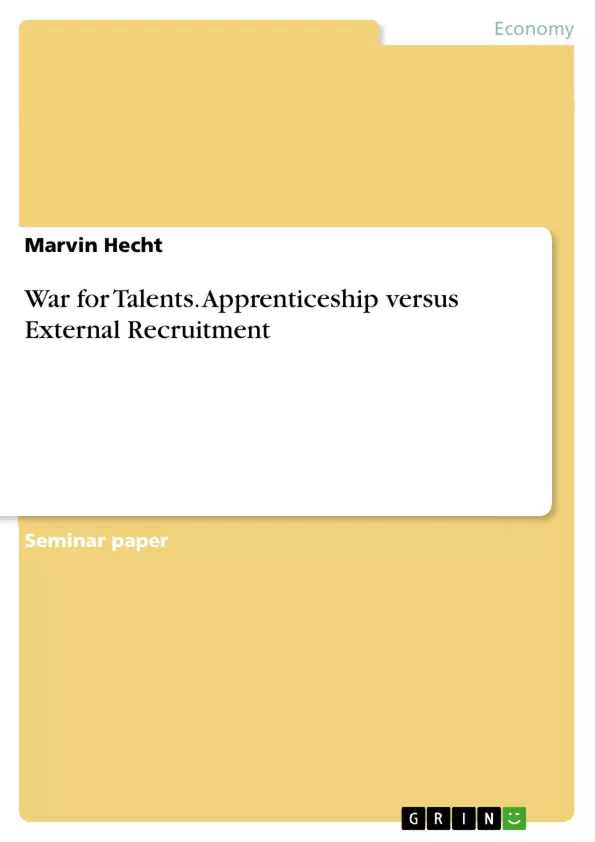Shortage of skilled workers is unaffected by the economy and always an issue especially in the light of trends as technical progresses, globalization, the economic structural change and also demographic trends. In Germany in the next few years because of the current demographic trend a decline in the labor force potential is expected. Workforce declines despite rising labor force participation and immigration. Furthermore, in conjunction with the recently improved employment situation a trend towards an employee market could become established in the near future. On the one hand companies would increasingly compete for employees with sought after skills and competencies. On the other hand wages are rising in tight labor market segments. Beyond if effective adaptation mechanisms like changes in educational choices, occupational mobility and wage increases do not come to fruition in some areas of the German economy the labor could become scarce. The fear of sustainable bottlenecks increased by the fact that it is already being challenged in certain regions and areas of activity with significant recruitment problems.
Inhaltsverzeichnis (Table of Contents)
- 1. Introduction
- 1.1 The Aim of the Work
- 1.2 Structure of the Thesis
- 2. The War for Tomorrow's Talents
- 2.1 Definition of Talent
- 2.2 Apprenticeship vs. External Recruitment
- 2.2.1 Apprenticeships
- 2.2.2 External Recruitment
- 2.2.3 Advantages & Disadvantages
- 3. Conclusion
- 4. Future prospects: Increasing effort of recruitment
Zielsetzung und Themenschwerpunkte (Objectives and Key Themes)
This paper analyzes the impact of demographic change and labor force decline on employee recruitment in German companies. It examines the challenges and opportunities related to the "War for Talents" and explores the effectiveness of apprenticeship programs versus external recruitment. The paper aims to highlight the factors influencing apprenticeship within a company and how external recruitment can address these factors. Furthermore, it examines the advantages and disadvantages of each recruitment approach for both the company and the employees.
- Demographic trends and their impact on labor markets
- The "War for Talents" and its implications for companies
- Apprenticeship as a recruitment strategy
- External recruitment as a recruitment strategy
- The advantages and disadvantages of each recruitment approach
Zusammenfassung der Kapitel (Chapter Summaries)
- Chapter 1: Introduction: The first chapter sets the stage by highlighting the issue of skilled labor shortage in Germany and its connection to demographic trends and economic structural change. It introduces the concept of demographic decline and its impact on the German workforce, using population projections to illustrate the expected shortage. The chapter emphasizes the importance of addressing this shortage and how companies need to adapt their recruitment strategies.
- Chapter 2: The War for Tomorrow's Talents: This chapter dives into the concept of talent, defining it as the intrinsic abilities possessed by individuals, encompassing skills, knowledge, and experience. It discusses the evolving landscape of recruitment, particularly the shift from traditional methods to the need for attracting talented individuals across various sectors. The chapter emphasizes the significance of recruiting talented employees and managers to gain both monetary and non-monetary benefits.
Schlüsselwörter (Keywords)
This paper explores key concepts such as demographic change, labor market challenges, recruitment strategies, apprenticeship programs, external recruitment, advantages and disadvantages of each approach, skilled labor shortage, talent acquisition, employee market, and workforce development. It also focuses on the impact of globalization and technological advancements on recruitment practices.
- Citar trabajo
- Marvin Hecht (Autor), 2018, War for Talents. Apprenticeship versus External Recruitment, Múnich, GRIN Verlag, https://www.grin.com/document/446601



